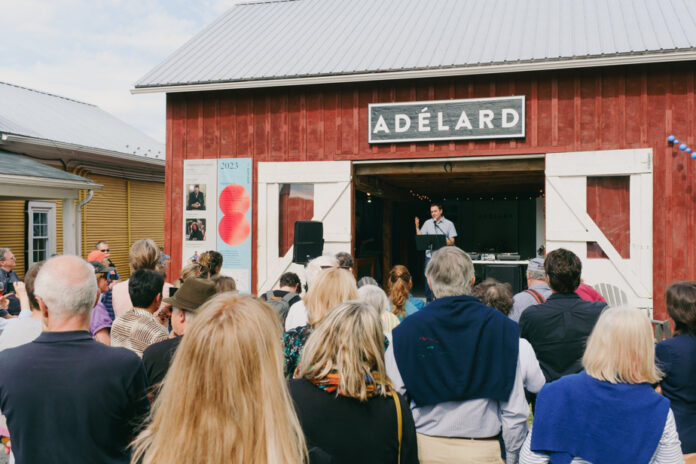Founded by collectors Sébastien Barangé and Gérald Filion, Adélard grows in scope each year, with the arrival of artists from increasingly diverse origins and the signing of partnerships. “We aim to one day have our activities cover the whole year,” says Gauthier Melin, its general and artistic director. This year is a year of transition. We had a lot of support, both from donors and funders. »
To celebrate all the creations that have emerged in Adelard since 2019, the center has invited art historian Sylvie Lacerte to mount a retrospective exhibition. The former curator of contemporary Quebec and Canadian art at the Montreal Museum of Fine Arts asked the 16 artists who had an artistic residency in Frelighsburg to determine what had been their place of inspiration during their residency, then to create a work related to this place.
“I made workshop visits last February to meet them, says Sylvie Lacerte. We then selected, with Gauthier Melin, outdoor exhibition sites in four villages: Frelighsburg, Dunham, Saint-Armand and Stanbridge East. »
These artists have often been in close contact with the communities of these villages during their residency. Jean-Michel Leclerc, for example, had done research at the Stanbridge East museum. His work is therefore in this village. Several were interested in the border situation of Frelighsburg, and others, like Emmanuelle Jacques and Anna Jane McIntyre, in the black community of the Eastern Townships.
“There has always been a common point linking these artists who have succeeded one another, says Sylvie Lacerte. As if something had been planted and created rhizomes that had met. The cartography of the works is therefore both geographical and human. Hence the title of the exhibition, Meeting Points, presented until November 19 in the four villages. The works are printed reproductions placed on trestles or attached to the walls of buildings.
Anna Jane McIntyre’s work, Bottle in the Sea / Potscards from the Edge, has been placed in front of the United Church of Philipsburg. It is directly linked to the place of worship that served as a refuge for black people fleeing their condition as slaves in the United States in the 19th century.
Loren Williams, who worked on cemeteries during her residency, placed her work, 6 feet above – 6 feet below, near the Bishop Stewart Memorial Church cemetery in Frelighsburg. It evokes the fate of Jane Freligh, the disinherited daughter of the man who gave the village its name, Abraham Freligh, a mill owner of German origin and “slaveholder”, according to Sylvie Lacerte, who underlines the relationship between the two works.
Milutin Gubash is the first of eight resident artists this year. This Quebec artist of Serbian origin is shooting in Frelighsburg, with local amateur actors, a film related to installations on which he worked in his studio.
We are in the squeaky comedy, the crazy humor, to take our world on the wrong foot. At the same time, Milutin Gubash is showing four of his videos in Adelard’s barn and exhibiting there a sculpture created with obsolete objects and linked to the theme of the video from his residence and his personal story, he who lived as a child in a refugee camp before arriving in Canada. Believing that a refugee is, unfortunately, often considered a waste.
An intense year for Adelard: there will also be the exhibition There are fires within that illuminate continents, by Audrey Beaulé, from October 7 to November 26, at the Bishop Stewart Memorial Church. The artist is designing, on the occasion of the 75th anniversary of Refus global, an artistic project related to her research on the history of abstraction in Quebec from a queer and feminist perspective. His works will be in conversation with works from the Loto-Québec collection. In addition, the exhibition Nightlife au mont Pinacle, by photographer Éliane Excoffier, launched last year in Frelighsburg will be presented, from June 10 to October 14, at the Domaine Howard park in Sherbrooke.















